Besides brick – how to finish your extension
Besides brick – how to finish your extension
Building an extension? Brick is a brilliant building material but it’s just one way to dress an extension. Check out these other options
Firstly, it’s important to realise that the external wall of the extension is not the same as the supporting structure. This means an extension can have blockwork structural walls but be finished in timber cladding, stone, render, or other more unusual materials to add warmth and originality to a property’s façade. It’s worth considering all the options as the choices are wide open.
Zinc
Zinc can be used all over the exterior of the building – roof or walls. It’s long-lasting, flexible and aesthetically pleasing. The metal can be formed to take curved and angular design, so offers great freedom of design. Other types of metal cladding include stainless steel and copper. The use of contrasting materials in home extensions is an increasingly popular way to create a clear distinction between old and new.
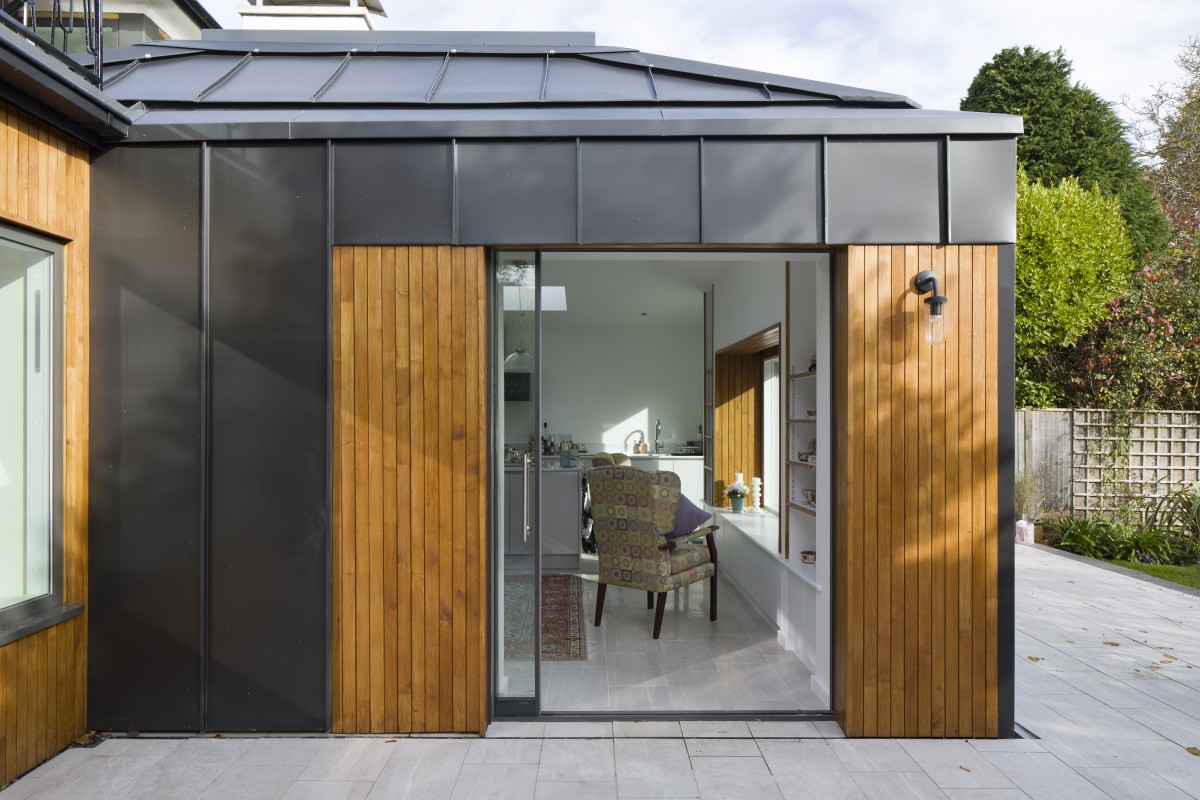
Image supplied by Forest Architecture
This modern extension is finished with dark grey zinc clad-walls and roof teamed with honey-coloured sweet chestnut cladding to soften the overall effect. Internally, the zinc contrasts with the brick of the original house.
Glass
Glass is a cutting-edge alternative to traditional brick and can look stunning. But it can be difficult to meet Building Regulations standards on energy efficiency if you use a lot of glass, so it needs careful design. Other potential drawbacks include overheating in strong sunshine and glare. Blinds may be necessary for shade.
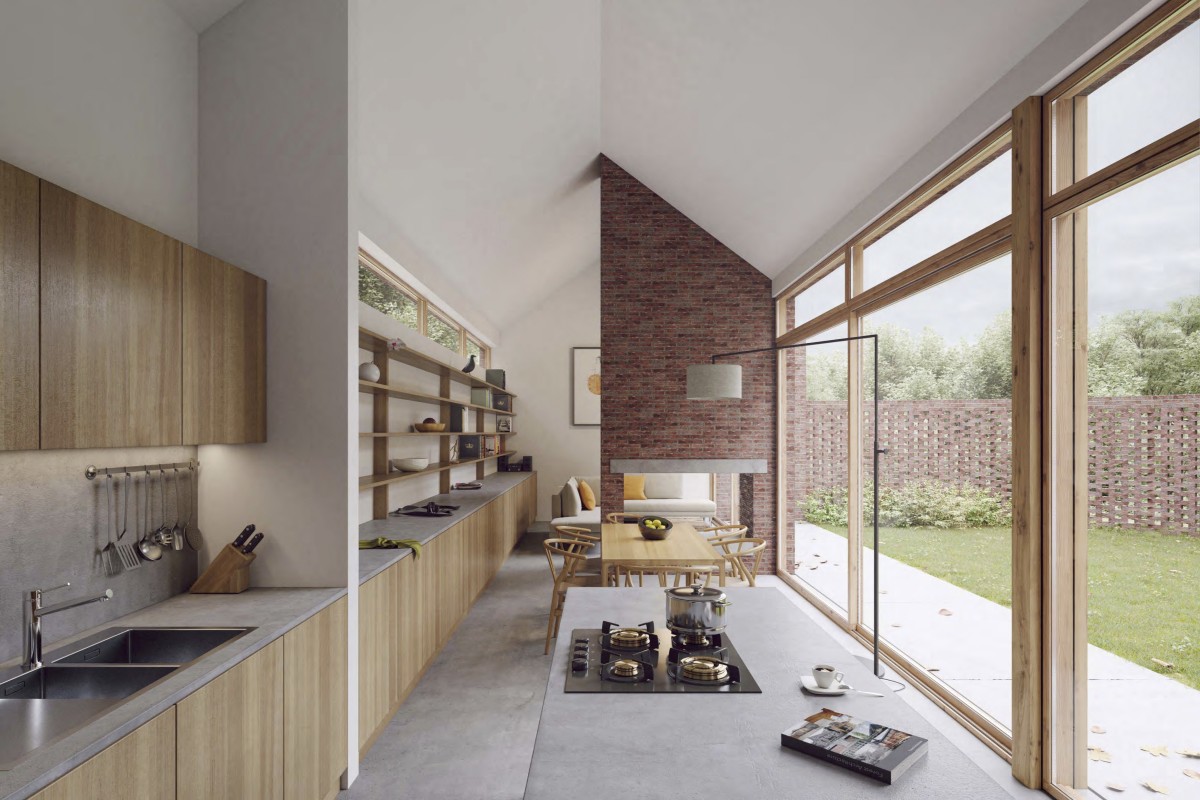
Image supplied by Forest Architecture
In this project, the homeowners, keen gardeners, wanted a single-storey building that would bring the outside in. A glass wall with sweet chestnut wood frames offers a view of the internal courtyard. The house was filled with thermal insulation exceeding Building Regulations requirements.
Brick
Brick is the conventional choice for exterior walls. It’s largely maintenance free, easy to source and there’s a wide range of sizes and styles. Bricks also vary in cost, so can suit most budgets.
On the downside, installation may be delayed by the weather, the foundations need to be wider and it can make exterior walls thicker.
Timber
Timber is enjoying a revival as a cladding material and increasingly used as an alternative to brick. It’s light, fast to install and is a renewable raw material. With proper maintenance, wood cladding can last for many years. Cedar and oak are both very durable species of wood, resistant to rot and pests.
Wood can be painted with stains, oils or left untreated for a totally natural look. Those opting for the natural look will see the wood fade to a silvery-grey. Painted wood needs to be repainted every few years and stains reapplied regularly.
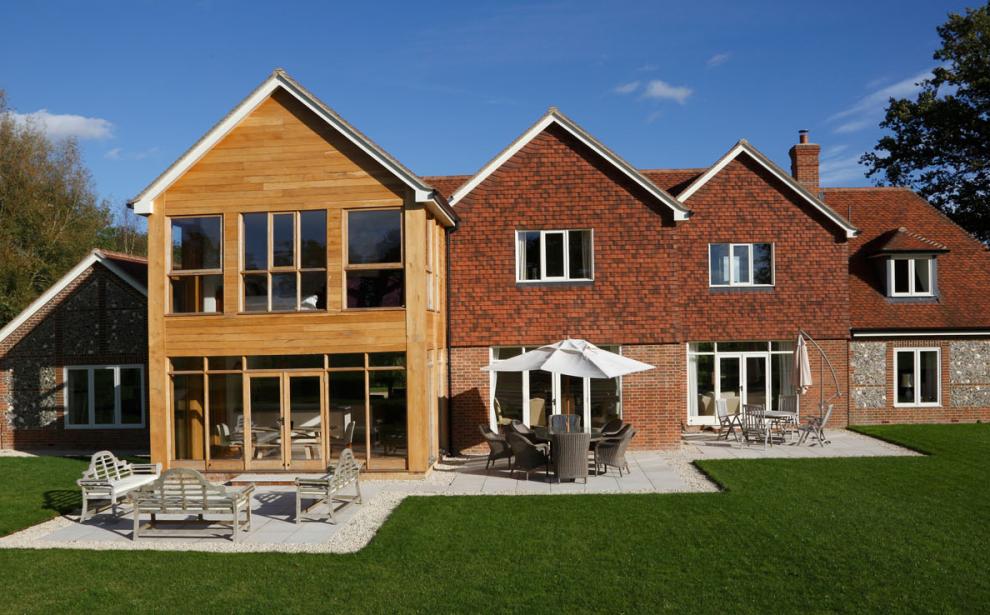
Image supplied by Pro Vision
In this modern take on an Arts and Crafts-style building there is a rich variety of materials embodying traditional craft skills, including timber as well as flint and brick walls. Flint is local to the area.
Render
Renders offer a lightweight, weatherproof coating. House render has come a long way since the days of pebble dash (sand and cement). Modern acrylic renders offer more crack resistance and can be very affordable too. They come in a variety of colours which can be pre-mixed with the render which does away with the need for painting. Silicon renders, meanwhile, are hydrophobic, which basically means they repel water. Some suppliers claim they are self-cleaning as the rain will simply run-off them.
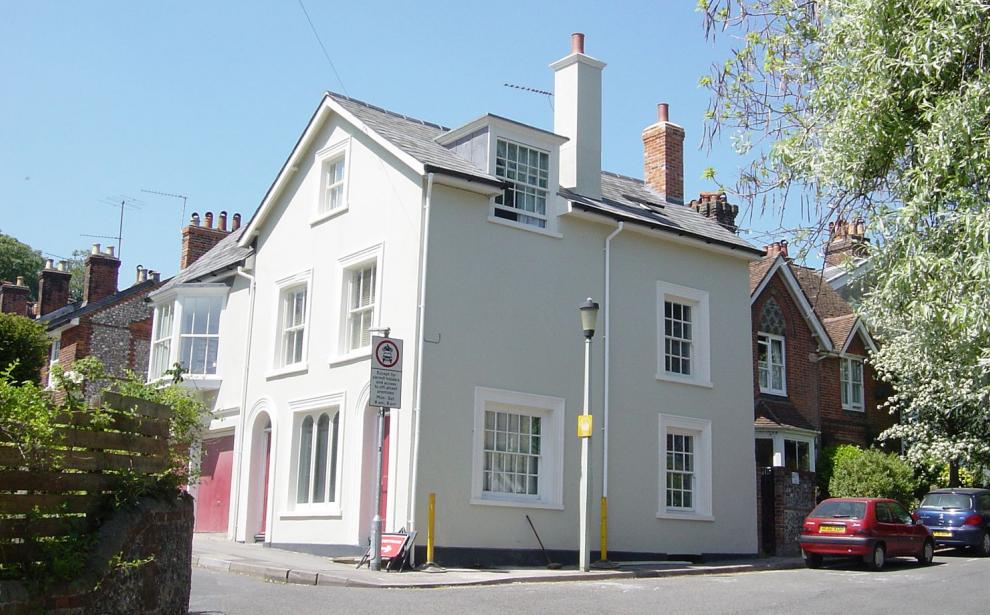
Image supplied by Pro Vision
Render can give a smart, clean look – as shown in this renovated family home.
Stone
Natural stone can be installed into a wall and help the building fit in with the landscape. The most common types include sandstone, limestone and granite however flint and slate are used as well. A range of different sizes, thicknesses, shapes and patterns can be created.
Major benefits include strength, durability and aesthetic appeal. If this is something you are interested in, consult your architect early in the design process as the underlying substrate layers will need to be able to handle the weight of natural stone.
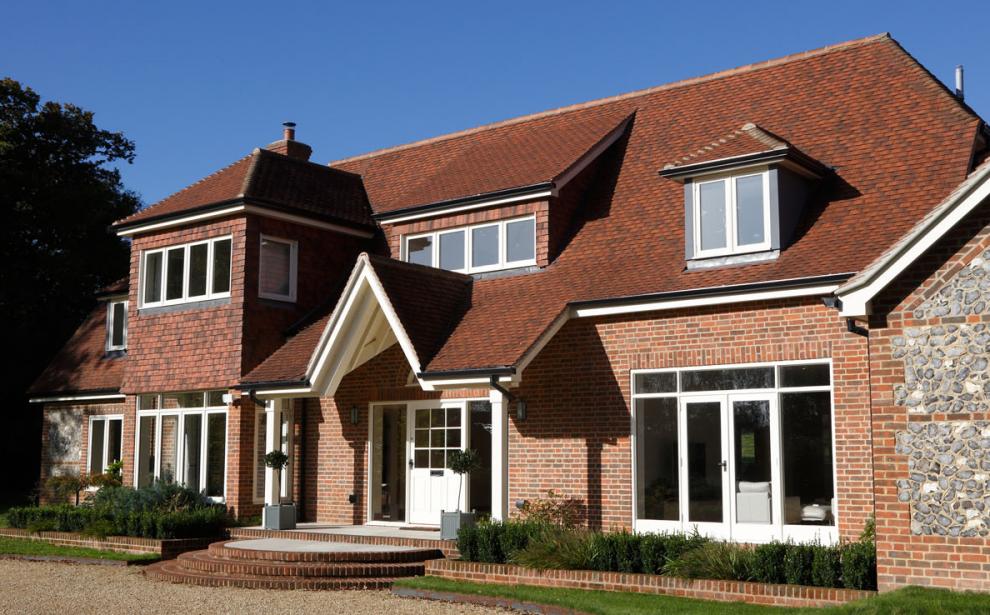
Image supplied by Pro Vision
In this new-build house, flint panels give depth and detail to the brick façade.
Try a mixture of materials
Contrast materials and textures for interesting results.
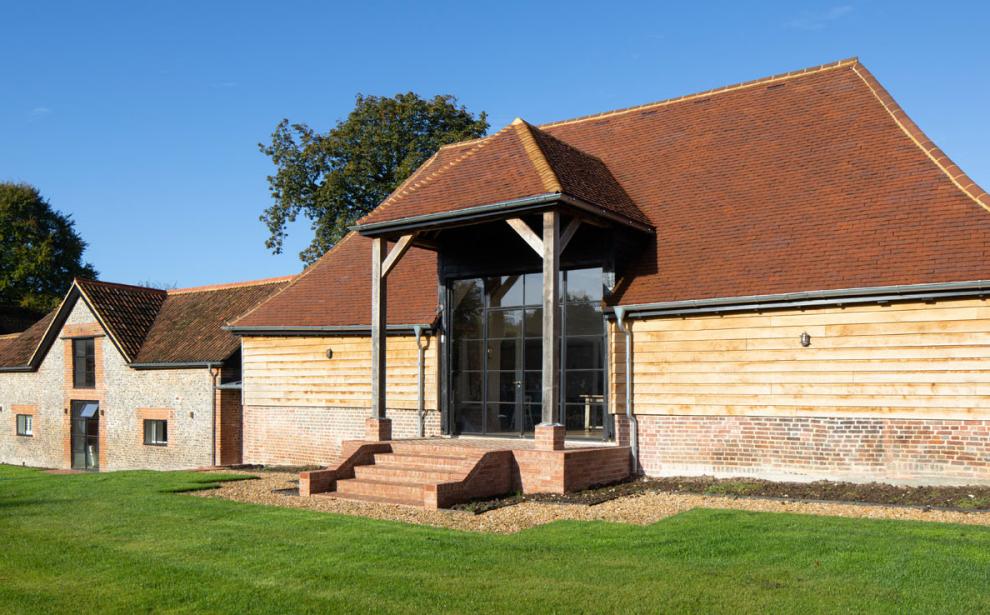
Image supplied by Pro Vision
In this barn conversion, industrial style metal windows are teamed with the original chunky timber and brick walls, adding a note of modernity.
Making a choice
Ultimately, the choice of exterior wall covering will probably come down to the look you want to achieve. Is your heart set on natural oak boarding? Or do you want brick walls to match your original house - or to create a strikingly modern look with zinc, copper or glass. Don’t forget the practicalities. Key factors to also consider include cost, ease of installation, energy efficiency, strength and durability.
